Buying a House with Rising Damp
- Buying a house with damp patches can be safe if the problem isn't severe.
- Damp can devalue your property, so you must get a house survey before making your purchase, even if you haven't noticed signs of rising damp.
- It's important to get a survey to check for this, as signs of rising damp may take years to appear.
- If the problem is complex, you can ask the seller to treat rising damp before the sale or renegotiate your purchase offer.
What is rising damp?
Rising damp is a rare and specific form of damp that affects a house's walls, but what is rising damp? It happens when water is absorbed from the ground floor through the building material, and it can seriously affect the property's value.
Depending on the extent of the damp patch or problem, it can cost hundreds or thousands of pounds to treat rising damp, and this is one of the many reasons we recommend a RICS survey when you're buying a new home (even if you haven't noticed any damp yourself) followed by a specialist damp and timber survey if the report does reveal signs of damp.
Is rising damp a deal-breaker?
While rising damp can be an issue, it's not a deal-breaker in a house purchase. The key is to assess the severity and the potential cost of treatment. If the damp is causing structural damage or posing a health risk, proceed with caution. However, in many cases, the issue can be resolved relatively easily and affordably. You should arrange a professional inspection to assess the issue's extent and potential solutions.
Damp and timber surveys are also recommended for homeowners who have noticed new signs of damp in a house they own. It is best to assess the problem as soon as possible.
What should you do before buying a house with damp?
If damp is discovered and requires work, you can use the rising damp survey report to negotiate with your seller. Either they can fix the problem before you purchase the property or take the estimated cost to treat rising damp off the purchase price so you can do the work yourself. Consider how long this work would take and if you would need to vacate the home. If they refuse to do either, it would be best to pull out of the purchase, or you'll buy a house and end up paying more than it's worth.
We can help with your damp survey
If you're buying with a mortgage, your lender may refuse to lend against a property with serious rising damp problems. In this case, you'll have no choice but to pull out or find another lender.
Our house surveyors are RICS accredited, and our qualified damp surveyors are PCA registered (Property Care Association).
How serious is damp in a house?
Bricks, mortar or sandstone, being porous materials, draw water naturally from the ground (moisture) and absorb excess moisture from it. Builders use damp proofing to protect against this by building in a non-porous layer of material that separates the bricks/mortar/sandstone from the ground, stopping the water from being absorbed.
Problems occur when this damp proofing either isn't present or has become damaged. This is made worse because if you're buying a house with damp, the signs of damp rising may not appear for a few years.
By the time these signs appear, the porous material/s will have become damp and moist and require speedy attention.
Purchasing a house with rising damp or penetrating damp?
Rising damp is often misdiagnosed as a penetrating damp problem, but a key difference to look out for is that rising damp creates a watermark up to 1m high on the wall. However, penetrating damp can manifest anywhere on the wall.
How do I know if I'm buying a property with damp issues?
You will need a specialist to diagnose rising damp; the visible signs of rising damp to look out for are:
- Damaged internal decoration – Damp or discoloured watermarks on internal walls;
- Damaged plaster – Disintegration, salting or blistering;
- Rotting skirting boards or floor boards – wet rot with decay;
- Localised dampness – Dampness on walls rarely exceeds one metre above ground level but may go much higher in extreme cases; and
- Rising damp smell – All kinds of damp have a similar musty smell
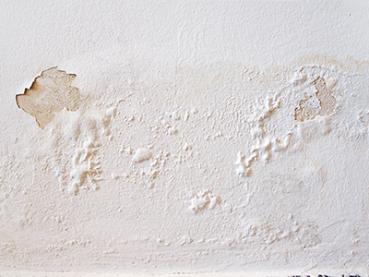
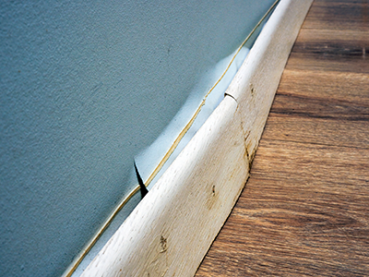
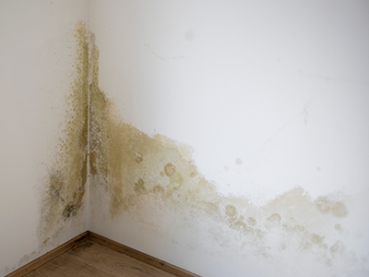
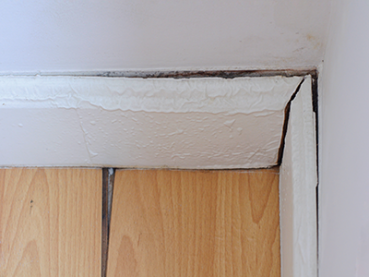
Rising damp, whether in your home or a rental property, needs addressing. The tell-tale signs range from damp patches and mouldy walls to excessive condensation, posing a serious threat to your health, safety, and the structural integrity of the building.
People living with mould in their homes are likely to experience infections, asthma issues, and irritation of allergies due to a weakened immune system. You should always seek medical help if you are living with or suffering the effects of mould.
If you are concerned you have damp then you'll need to instruct damp specialist surveyors to assess the property and determine the cause and extent of the problem.
How much does a damp survey cost?
Our damp surveys range in cost from £264 INC VAT upwards, depending on the size of your property.
How much does damp devalue a house?
This depends on the problem's extent and the damp type (condensation, penetrating damp, or rising damp). The latter is the most damaging. It can cause a property's value to drop by at least 10%.
Condensation can usually be resolved with better ventilation or insulation, and as long as it hasn't caused a secondary issue like mould growth, it shouldn't affect the property value much. Penetrating damp can also reduce the value of a house by 10%.
Structural damage caused by damp can devalue the property by as much as half, and if left unchecked, the building can deteriorate so much that it has to be ripped down.
What are the main issues that cause damp to rise?
- The original damp proof course is no longer effective.
- No damp proof system was ever laid.
- The ground outside the external wall is higher than damp protection.
- Internal plastering bridges the damp proof course.
- Leaking water pipes at the base of the wall.
- Build-up of rubble inside a cavity wall bridges the damp proof course.
- A previous damp issue has left residual damp at the base of a wall.
- Poor circulation causes condensation at the base of a wall.
You should always get an expert to test the walls if signs of rising damp have been flagged in your HomeBuyer Report or a Building Survey. We have local rising damp specialists across the country who can identify rising damp and recommend your best rising damp treatment process. .
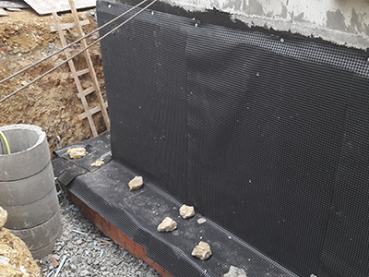
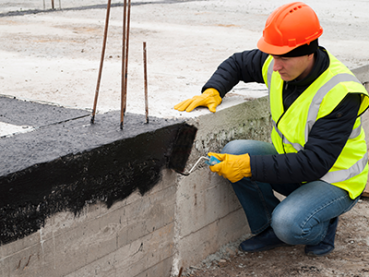
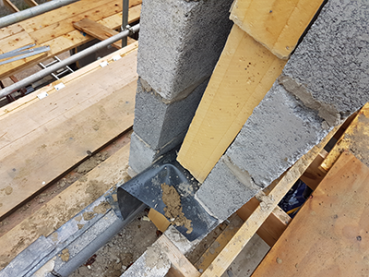
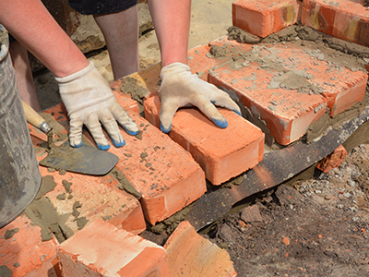
Do house surveyors check for damp?
A House Surveyor will check for visible signs of damp and take a moisture reading. If there is high moisture or a visible rising damp issue, they will report it, and you should book a specialist damp survey to assess the damp problem.
A Rising Damp Specialist will then inspect the internal and external walls and floorboards. They again test for damp levels using a moisture meter and take samples from the porous material to determine how damp it is. They get this by drilling into the wall.
RICS Surveyor and builder Jeff Howell recently wrote that a damp meter can detect other atmospheric conditions that may not be relevant. Therefore, you must book a full damp and timber survey before paying lots of money for new damp protection measures.
Chemical damp proof injections are advised for treating rising damp on around 5,000 UK homes weekly - which costs more than £200 million per year - much of this is because of the widespread misuse of electrical moisture meters.
Jeff also confirmed investigations into other types of damp proofing, such as electro-osmosis and atmospheric siphons (e.g. Wallguard, Schrijver System and Holland Damp Proofing). He stated that these are often mis-sold to the British public, too.
If you have rising damp issues, you can get it fixed but you are strongly advised to get a damp specialist to confirm your condition first.
Should I pull out of a house with damp?
No. You don't necessarily have to pull out of buying a house with damp, depending on the severity of the problem; however, you are right to pause here and reconsider the purchase, as treating rising damp can be relatively simple.
The 'best' kind of rising damp is just caused by a higher ground level outside the house, which often happens during landscaping and means the earth rests against the wall above the level of an existing damp-proof membrane.
Rising damp treatment is relatively affordable if all that's required is to dig the ground level down to match or sit below the existing damp course, so this shouldn't be a cause to pull out of buying a house you love.
In extreme cases, asphalt tanking may be required for rising damp treatment, in which case you will want to pull out of the purchase unless you are ready to take on a big project. This involves digging down around the house and adding a physical damp-proof membrane.
How do you fix rising damp and how much does it cost?
Problem | Solution | Terraced House – One Wall | Terraced House – Whole House | Semi-Detached House – One Wall | Semi-Detached House – Whole House | Detached House – One Wall | Detached House – Whole House |
|---|---|---|---|---|---|---|---|
Problem Ground level is above the existing damp proof course | Solution Excavate soil only | Terraced House – One Wall £204 | Terraced House – Whole House £268 | Semi Detached – One Wall £262 | Semi Detached – Whole House £594 | Detached House – One Wall £437 | Detached House – Whole House £1,456 |
Problem Ground level is above the existing damp proof course | Solution Excavate soil and lay pre-cast concrete paving slabs | Terraced House – One Wall £431 | Terraced House – Whole House £728 | Semi Detached – One Wall £600 | Semi Detached – Whole House £1,491 | Detached House – One Wall £1,036 | Detached House – Whole House £3,274 |
Problem No damp proof course in wall | Solution Inject silicone damp proofing course | Terraced House – One Wall £221 | Terraced House – Whole House £350 | Semi Detached – One Wall £384 | Semi Detached – Whole House £769 | Detached House – One Wall £600 | Detached House – Whole House £1,899 |
Problem Internal walls are damp | Solution Asphalt tanking to 1.2m and decorate to full height | Terraced House – One Wall £1,631 | Terraced House – Whole House £3,250 | Semi Detached – One Wall £2,435 | Semi Detached – Whole House £6,477 | Detached House – One Wall £4,858 | Detached House – Whole House £15,366 |
Source: Royal Institution of Chartered Surveyors Building Cost Information Service.
If you think you have damp rising and your RICS Surveyor also has suspicions of the issue, book a Damp Survey from a Damp Specialist, wait for the Damp Survey to come back, and only then take action.
If you haven’t bought the property and the damp survey is conducted while you are doing your due diligence, speak to the seller and negotiate a reduction in the purchase price to account for the costs you will incur. This is fair because the damp will have worsened during their ownership.
| Example Damp and Timber Survey |
 |
Andrew started his career in 2000 working within conveyancing solicitor firms and grew hands-on knowledge of a wide variety of conveyancing challenges and solutions. After helping in excess of 50,000 clients in his career, he uses all this experience within his article writing for SAM, mainstream media and his self published book How to Buy a House Without Killing Anyone.
Caragh is an excellent writer and copy editor of books, news articles and editorials. She has written extensively for SAM for a variety of conveyancing, survey, property law and mortgage-related articles.









